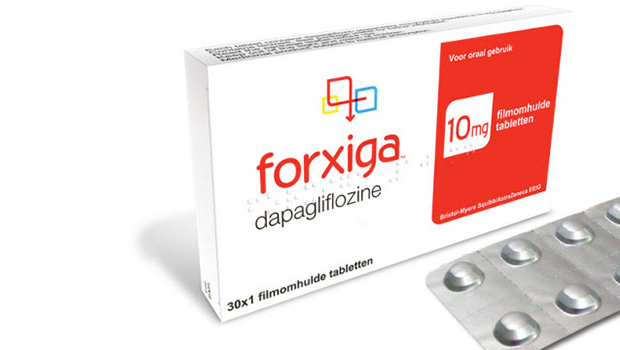Source: US FDA May 08, 2019 5 years, 10 months, 3 weeks, 4 days, 20 hours, 3 minutes ago
If you have type 2 diabetes and are taking a newer class of medications to treat your disease—but one day you notice pain, redness and a foul odor in your genital area.If this happens, new research suggests you need to see your doctor immediately, because you may be suffering from Fournier gangrene. Also known as a "flesh-eating" disease, this infection attacks your genital or anal region and can quickly kill tissue as it spreads rapidly.

Unfortunately, it has become a rare but still possible safety concern for people taking diabetes medications known as SGLT2 inhibitors, according to U.S. Food and Drug Administration scientists.
SGLT2 inhibitors are a newer class of diabetes medications, introduced in 2013.
Drugs in this class include canagliflozin (Invokana), dapagliflozin (Farxiga) and empagliflozin (Jardiance).
Fournier gangrene occurred in 55 people taking these drugs between March 2013 and January 2019. For comparison, the researchers looked for cases of Fournier gangrene in people taking other diabetes medications from 1984 to 2019. They found only 19 such cases.
Still, the risk for Fournier gangrene remains very low, the researchers stressed.
"In 2017, an estimated 1.7 million patients received a dispensed prescription for an SGLT2 inhibitor," said study author Dr. Susan Bersoff-Matcha, a medical officer in the FDA's Center for Drug Evaluation and Research. So, "Fournier gangrene is a rare event," she said. "While our study shows an association between treatment with SGLT2 inhibitors and Fournier gangrene, we don't know exactly what the risk is, or if Fournier gangrene can be predicted."
Broad-spectrum antibiotics and surgery to remove the dead tissue are treatment options, the researchers said.
SGLT2 inhibitors work in the kidneys, allowing excess blood sugar to be removed in the urine, they said.
In addition to lowering blood sugar levels, the drugs may also reduce the risk of heart disease and stroke in some people with type 2 diabetes.
But possible side effects include urinary tract infections and genital infections, such as yeast infections. Kidney problems can also be a concern with this class of medications.
All of the patients with Fournier gangrene identified in this study needed to be hospitalized. Some had several surgeries. Three of the 55 people died from Fournier gangrene.
The average age of the people with Fournier gangrene was 56. Thirty-nine were men. Forty-one cases occurred in the United States. Thirty-one of the 55 cases identified were also taking an additional diabetes medication.
Of those with Fournier gangrene, 21 were using canagliflozin, 16 were using dapagliflozin and 18 were taking empagliflozin, the study said.
Dr. Joel Zonszein, director of the clinical diabetes center at Montefiore Medical Center in New York City, said that while the study was well-done, it cannot prove a cause-and-effect link between the drugs and the disease.
"Infections of the pubic and rectal area are quite common in people with diabetes, they don't have Fournier's. Fournier's is a very aggressive, but extremely rare, disease," said Zonszein, who wasn't involved with the study.
When Fournier gangrene does occur, it's hard to kn
ow if it is caused by a medication. He pointed out that a number of clinical trials have been done on SGLT2 inhibitors that have included tens of thousands of people, and there haven't been any reports of Fournier gangrene.
"I counsel my patients about infections in the genitalia. The main concern is to be aware that they can occur. And, providers need to be more aware of Fournier's. They have to immediately try to establish the cause of infection and aggressively treat it if they suspect Fournier gangrene," Zonszein said.
He said a far bigger concern is uncontrolled diabetes and the risk of complications when blood sugar levels aren't controlled. "The benefits of these medications outweigh the risks," he said.
In a statement, Boehringer Ingelheim, the company that makes Jardiance (empagliflozin), said the company actively monitors for side effects related to their medications.
"We remain confident in the positive benefit-risk profile of empagliflozin, and empagliflozin-containing products, as outlined in the prescribing information," the statement from Boehringer Ingelheim said.
The prescribing information of all SGLT2's was recently changed to reflect the possible risk of Fournier gangrene, as directed by the FDA.
Janssen Pharmaceuticals, maker of Invokana (canagliflozin), and AstraZeneca, maker of Farxiga (dapagliflozin), did not respond to requests for comment.
The findings were published May 6 in the
Annals of Internal Medicine.
Reference: Susan Bersoff-Matcha, M.D., medical officer, Center for Drug Evaluation and Research, U.S. Food and Drug Administration; Joel Zonszein, M.D., director, clinical diabetes center, Montefiore Medical Center, New York City; May 3, 2019, statement, Boehringer Ingelheim; May 6, 2019,
Annals of Internal Medicine
Thailand Medical News Note: These medications are also available in Thailand and patients who have been taking them are advised to consult their local Doctors immediately to review their conditions and explore drug alternatives.
